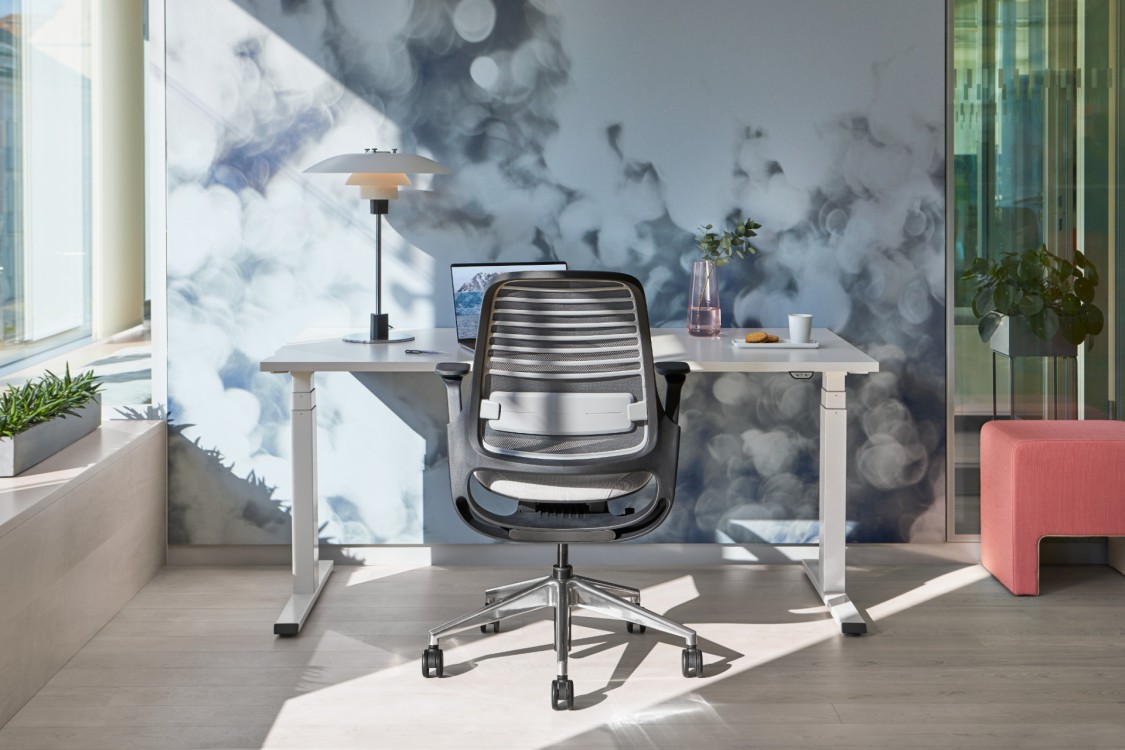
What you need in an office chair – whether you’re working in the office or from home.
Studies are showing people are sitting for longer when working from home. We have studied the science and effects of sitting for long periods and concluded an ergonomic chair can keep you comfortable and productive – wherever you work. In fact, people who sat in an ergonomic chair for long periods of time actually increased their productivity by 17.8%
What to Look For?
How do you know if you have a good office chair? You won’t feel or think about any discomfort while you sit and it won’t leave you feeling creaky, weak or stiff when you stand. Your chair should keep you comfortable and focused on your work, not your chair. That dining room chair you’ve been relying on lately is only meant for short-term sitting – not a full day. So, when you’re shopping for a chair designed to support real work look for these key features:
EASILY ADJUSTS TO GET YOU MOVING
A ‘high-performance’ office chair should be highly adaptive to accommodate your unique body shape, size or weight with easy and intuitive adjustments that allow you to personalize it for you and your workstyle. A truly ergonomic office chair will move with you – helping you change posture without sacrificing support. As you recline, a chair’s seat and backrest should move as you do – opening your hip angle so your hip flexors and other muscles in the front of your body remain strong and flexible.
OPTIMIZES POSTURE AND TECH CONNECTIONS
It’s easy to adopt unhealthy habits, like slouching and staying still for too long. Our spines naturally take on an S-shape. But when we sit, our hips tend to roll back and shift the spine into an unnatural C-shape. Make sure the backrest of your chair fits the natural contour of your back and reinforces your spine as you sit to maintain a healthy alignment. The age old ‘sit up straight’ is easier to achieve with a good office chair.
Discomfort can also be caused by how we interact with our technology. This interaction drives our posture; if not positioned well, it causes us to adopt poor postures. To mitigate this, make sure to set your laptop or desktop screens just below eye level. Additionally, make sure that your hands stay connected to input devices (such as keyboards) at all times. The arms of your chair should stay parallel to the floor while you recline – keeping your arms straight on your desk and your eyes level with your screen.
To truly optimize your posture, consider adding a headrest to your office chair for additional support for the head and neck. A headrest will keep your head centered over the spine and shoulders, instead of leaning forward as you connect with your digital devices. A good chair will keep you “in the pocket” and connected to your work with easy access to screens and devices.
COMFORT WHERE AND WHEN YOU NEED IT MOST
Have you ever experienced poor circulation in the back of your legs after sitting for a long period of time? A good ergonomic chair will have strong yet pliable foam with adaptive bolstering (air pockets under the foam) in the seat to conform to the body and create pressure-free comfort for your sit bones, glutes and thighs.
When deciding which office chair will support you best, consider how you work. Do you need a chair to support you sitting for long periods of time, or is your work style more collaborative and only requires you to sit part of the time? Do you want to be in full control of your sitting experience, or do you want to just sit down and let your chair do the work for you? Look for a chair that provides you the comfort and control based on your personal preference.
Check our our STOCKED range of Steelcase office chairs via our Shop Now page.
To read the full article by Steelcase: What You Need In An Office Chair

